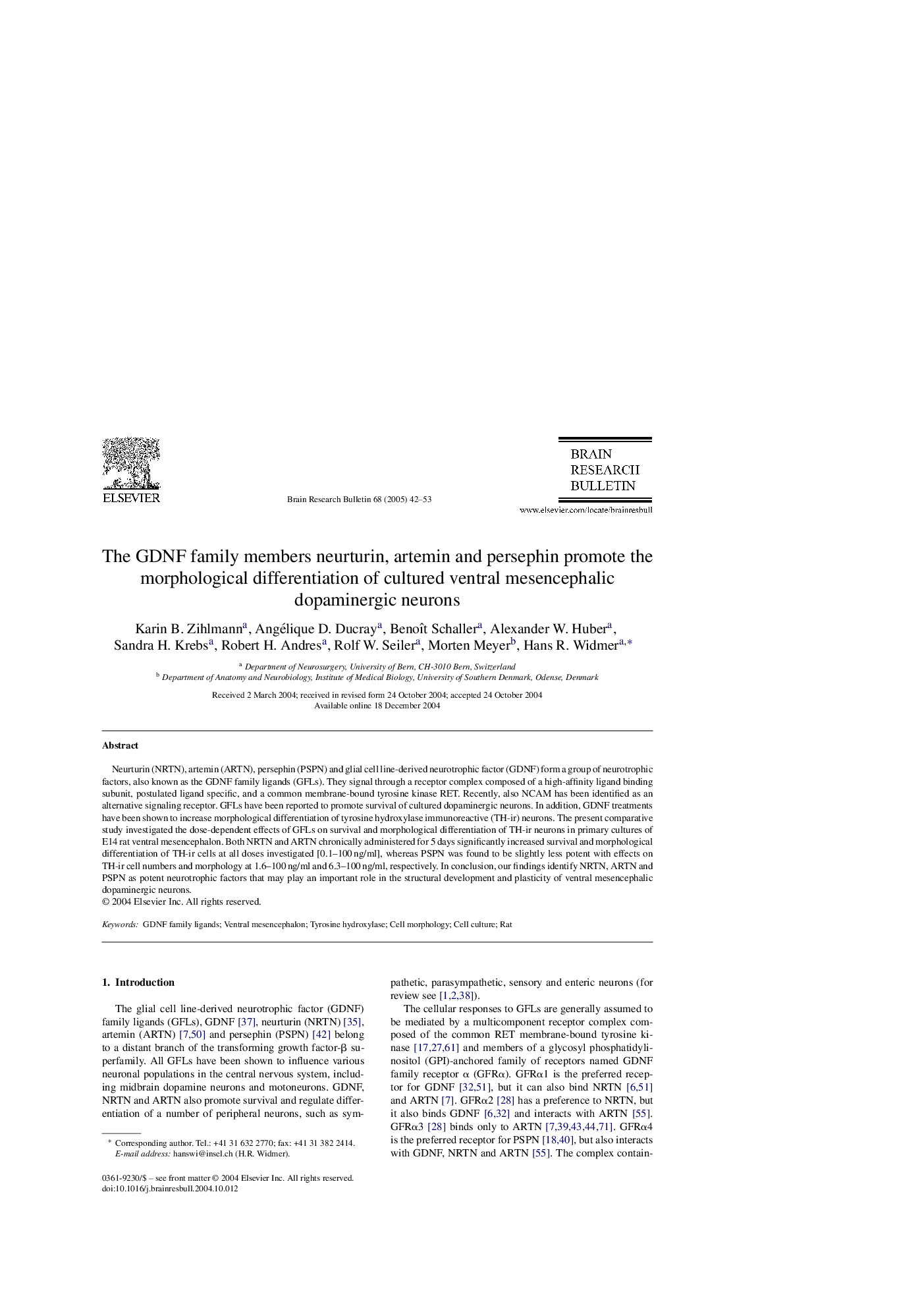| Article ID | Journal | Published Year | Pages | File Type |
|---|---|---|---|---|
| 9409486 | Brain Research Bulletin | 2005 | 12 Pages |
Abstract
Neurturin (NRTN), artemin (ARTN), persephin (PSPN) and glial cell line-derived neurotrophic factor (GDNF) form a group of neurotrophic factors, also known as the GDNF family ligands (GFLs). They signal through a receptor complex composed of a high-affinity ligand binding subunit, postulated ligand specific, and a common membrane-bound tyrosine kinase RET. Recently, also NCAM has been identified as an alternative signaling receptor. GFLs have been reported to promote survival of cultured dopaminergic neurons. In addition, GDNF treatments have been shown to increase morphological differentiation of tyrosine hydroxylase immunoreactive (TH-ir) neurons. The present comparative study investigated the dose-dependent effects of GFLs on survival and morphological differentiation of TH-ir neurons in primary cultures of E14 rat ventral mesencephalon. Both NRTN and ARTN chronically administered for 5 days significantly increased survival and morphological differentiation of TH-ir cells at all doses investigated [0.1-100Â ng/ml], whereas PSPN was found to be slightly less potent with effects on TH-ir cell numbers and morphology at 1.6-100Â ng/ml and 6.3-100Â ng/ml, respectively. In conclusion, our findings identify NRTN, ARTN and PSPN as potent neurotrophic factors that may play an important role in the structural development and plasticity of ventral mesencephalic dopaminergic neurons.
Related Topics
Life Sciences
Neuroscience
Cellular and Molecular Neuroscience
Authors
Karin B. Zihlmann, Angélique D. Ducray, Benoît Schaller, Alexander W. Huber, Sandra H. Krebs, Robert H. Andres, Rolf W. Seiler, Morten Meyer, Hans R. Widmer,
